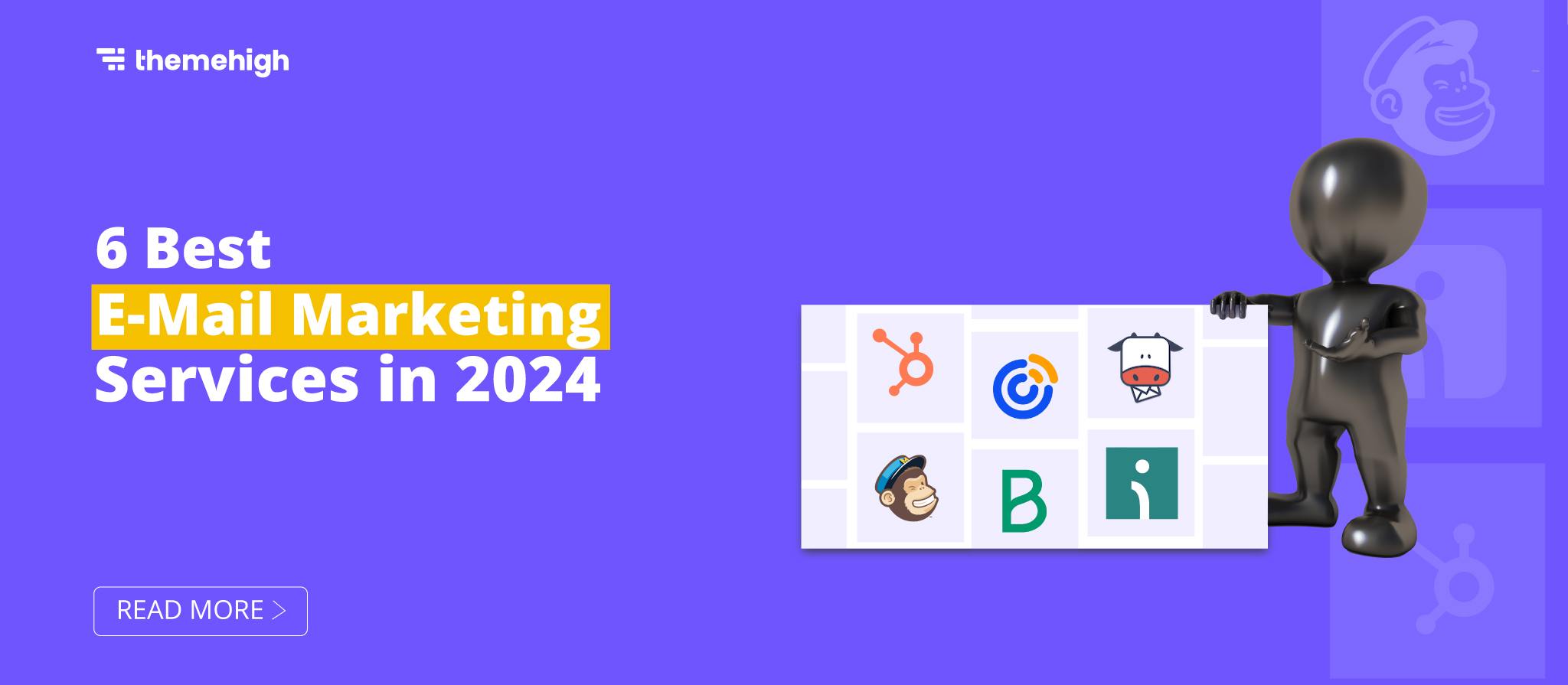In this digital era, there are no limitations to how you can run your business. As a business owner, your aim should be to leave a lasting impression that will get your customers not just talking about your brand but also making them want to come back for more. With customer interactions with brands evolving at a fast pace, businesses need to focus on what hooks their customers. Omnichannel personalization is a strategy that has proven to work even for the big names in e-commerce.
What is omnichannel personalization?
Simply put, omnichannel personalization refers to providing consistent, unified customer experiences across different customer touchpoints – both online and offline. Omnichannel marketing aims to provide a seamless experience no matter the mode of interaction – No bumps, no hiccups, no dead ends. To implement an effective omnichannel strategy, you should fully coordinate and integrate your communication channels to provide customers with a consistent brand message and experience.
Omnichannel vs Multichannel

A business that uses a multichannel approach could have multiple channels to reach out to its customers. However, these channels are not integrated and do not provide a unified and consistent experience. Different channels work independently, and the data obtained will be fragmented and not shared between channels. It takes a product-centric approach.
In omnichannel personalization, customers can seamlessly switch between channels while interacting with your brand. Omnichannel takes a customer-centric approach. All content on your website, social media page, brick-and-mortar store, or any other channel will be unified around a single message or concept.
Why should you implement omnichannel personalization?
52% of customer-obsessed companies using an omnichannel strategy see improved customer interactions and engagement. If your company wants to be in league with the big players, it is essential to implement an omnichannel strategy across all touchpoints. Let’s look at some of the benefits of implementing this strategy.
Data-driven insights
Implementing omnichannel personalization requires a robust data infrastructure, which allows businesses to collect, analyze, and leverage customer data effectively. By gaining insights into customer behavior, preferences, and purchasing patterns, companies can make more informed decisions and continuously refine their personalization strategies to serve their customers better.
Improved Customer experience
Omnichannel personalization delivers customers a seamless experience across multiple channels and touchpoints. By leveraging customer data, you can provide personalized content, product recommendations, and offers to your customers. A hassle-free interaction with your brand leads to a more satisfying shopping journey.
Higher Conversion Rate
A smooth customer experience based on individual preferences allows businesses to reduce friction in the buying process and encourage customers to take action, leading to higher conversion rates and increased sales.
Increased retention and CLV
31% of consumers cite personalized experiences as the reason they stay loyal to a brand. As per a survey by McKinsey, customers across all generations are now eager for more personalized products. An omnichannel strategy lets you collect data from multiple touchpoints and tailor a hyper-personalized experience for your customers. Customers feel valued and are more likely to remain loyal to your brand, repeat purchases, and become advocates who spread positive word-of-mouth.
Boost brand awareness
Since omnichannel personalization offers a consistent brand experience across all touchpoints, your logo, tagline, and brand message will constantly come under your customer’s attention. Constant engagement with your brand across multiple channels will raise your brand’s awareness and also improve trust in your brand.
How to effectively implement omnichannel personalization?
Though implementing this strategy has some obvious benefits, it could seem arduous from a store owner’s perspective. However, with careful planning, you can implement it effectively. Let’s look at what those steps are:
Create a buyer persona
You can provide a personalized experience only if you understand your audience well. Create a detailed buyer persona and study the type of interactions that users carry out on different channels. Consider demographics, customer behaviour across channels, buying habits, pain points, etc. You should have a detailed understanding of who your customers are, what they expect from you, and how to deliver it to them in the best way possible.
Identify the right channels
You must understand the channels your customers frequent to implement a targeted personalization strategy across different touchpoints. Customers use different channels to gain information about a product before purchasing. Opting for an omnichannel does not necessarily mean you should showcase your brand on all available channels. Once you create a buyer persona and understand your customers, you will be able to understand what channels they frequent. You can then focus your efforts on those channels. Drive customers to channels that are most relevant for their customer journey.
Integrate data from different channels
Data integration is of paramount importance for an effective omnichannel strategy. Customer data should easily flow between different channels. You should also ensure that you offer a consistent brand message across all channels so that customers instantly recognize your brand. You can use various automation tools to integrate customer data from online and offline channels to provide a unified experience.
Map the Customer Journey
Map the customer journey across different channels, both online and offline. Identify the key touchpoints and moments of engagement and tailor your personalization strategy in a way that significantly impacts customer experience. However, remember that customer preferences change over time, and develop solutions that keep pace with this.
The customer journey is not a simple and linear process but a very complex one that varies from one customer to another. You must ensure every interaction with your customer is relevant and closely related to their journey.
Measure your performance
Use Key Performance Indicators(KPIs) to monitor and analyze your strategies constantly. KPIs like conversion rates, customer retention, and customer lifetime value can give you a fair assessment of your performance. You can also optimize your strategies through A/B testing.
Good Old Customer Support
Your omnichannel strategy will be complete only if you back it up with customer support. Not all your customers might be self-sufficient or in a position to navigate through the buying process single-handedly. Some might need an extra hand to tackle specific issues. Take Amazon, for example; they offer live interactions through company agents who tackle complex problems with empathy and understanding.
A few helpful tools for omnichannel personalization
CDP
Unlike CRM, CDPs gather data from every touchpoint – ad clicks, website traffic, points of transaction, in-product user behavior, offline interactions, and more. All the collected data is then consolidated to make high-level decisions and precise marketing campaigns. AI-powered CDPs can provide more accurate insights, especially when there is a higher complexity and volume of data.
Email marketing tools
If your customers prefer emails as a source of interaction with your brand, investing in an email marketing tool will be beneficial. A compelling email will boost conversions and make the necessary impact on customers’ decision-making.
Chatbots
Though live support is unavoidable while handling complexities, having a chatbot in place is always helpful for handling simpler issues that customers might face.
AI-powered product recommendations
A powerful AI tool can be a great addition to improving product recommendations across different channels. Using AI, you can also ensure that each customer gets recommendations that are fully personalized and tailored to their preferences.
Brands that have implemented omnichannel personalization

Starbucks

Considered a pioneer of the omnichannel approach, Starbucks has used omnichannel strategies effectively to drive people through different stages of the sales funnel. It all started when they came up with a plan to make people sign up for their rewards program. They just had a few loyal customers who signed up for it. As a first step, they offered free Wi-Fi in their stores. However, customers had to share their email addresses first to connect to the Wi-Fi. This simple strategy gave them direct access to around 10 million customers. The next step was to email them exclusive personalized limited-time offers based on their drinks preferences, order history, weather, etc. Starbucks uses a type of machine learning called Reinforced Learning(RL) to personalize every customer journey by offering tailored recommendations. Through such strategies, they not only improved customer relationships but also increased retention and purchase frequency.
Timberland

Timberland’s omnichannel strategy is nothing short of amazing. If one asks what the most significant benefit of shopping offline is, the answer would be that it helps you to see your products up close and try them out. What Timberland did was give customers the option to try products offline and buy them online. Now, how does that work? They used Near Field Technology (NFC) and added tags to products. They provided tablets in their stores, which the customers could use to tap the product signages and get complete information about a particular product. Customers also received product recommendations and style tips to complete their look. Customers can add products to a wishlist and complete the purchase at the store or mail it to their email address and go home and complete the purchase. They provided the customers with an enhanced offline experience interconnected with their online interactions. The brand learned about customers’ purchase preferences by tracking their interactions on the tablet. Timberland also gained access to the users’ email addresses in the process.
Amazon Hub

An Omnichannel strategy aims to remove the divide between online and offline channels by offering a smooth transition between the two. Amazon has implemented this effectively with ‘Amazon Hub.’The idea behind this concept is to ‘receive packages from anyone anytime.’ A hub is a self-service station where customers can pick up their orders at a time of their choosing. Any package sent to a customer’s home address will be collected and stored securely inside a locker. When customers enter a pickup code, the locker opens, and they can collect their order. This is one of the few examples of how Amazon ensures its customers a truly personalized and hassle-free journey.
Netflix
Being a subscription-based business means you need to be at the top of your personalization game if you want customer retention and loyalty. Netflix makes use of a hyper-personalized omnichannel strategy to achieve this. The ease with which Netflix allows customers to switch their favourite show from a TV screen to a mobile screen is unparalleled. They maintain a consistent and smooth experience across all viewing channels. Netflix uses AI and machine learning to analyze aggregated customer data and deliver what the customers want. They recommend movies and shows not just inside their app but also email recommendations to customers’ inboxes. This gives customers a smooth experience across all platforms.
Let’s wrap up
An omnichannel strategy helps stay ahead of the competition in the ever-evolving e-commerce landscape. With omnichannel personalization, you can provide customers with a consistent and convenient experience that leads to higher customer satisfaction and loyalty.










 THANK YOU!
THANK YOU!